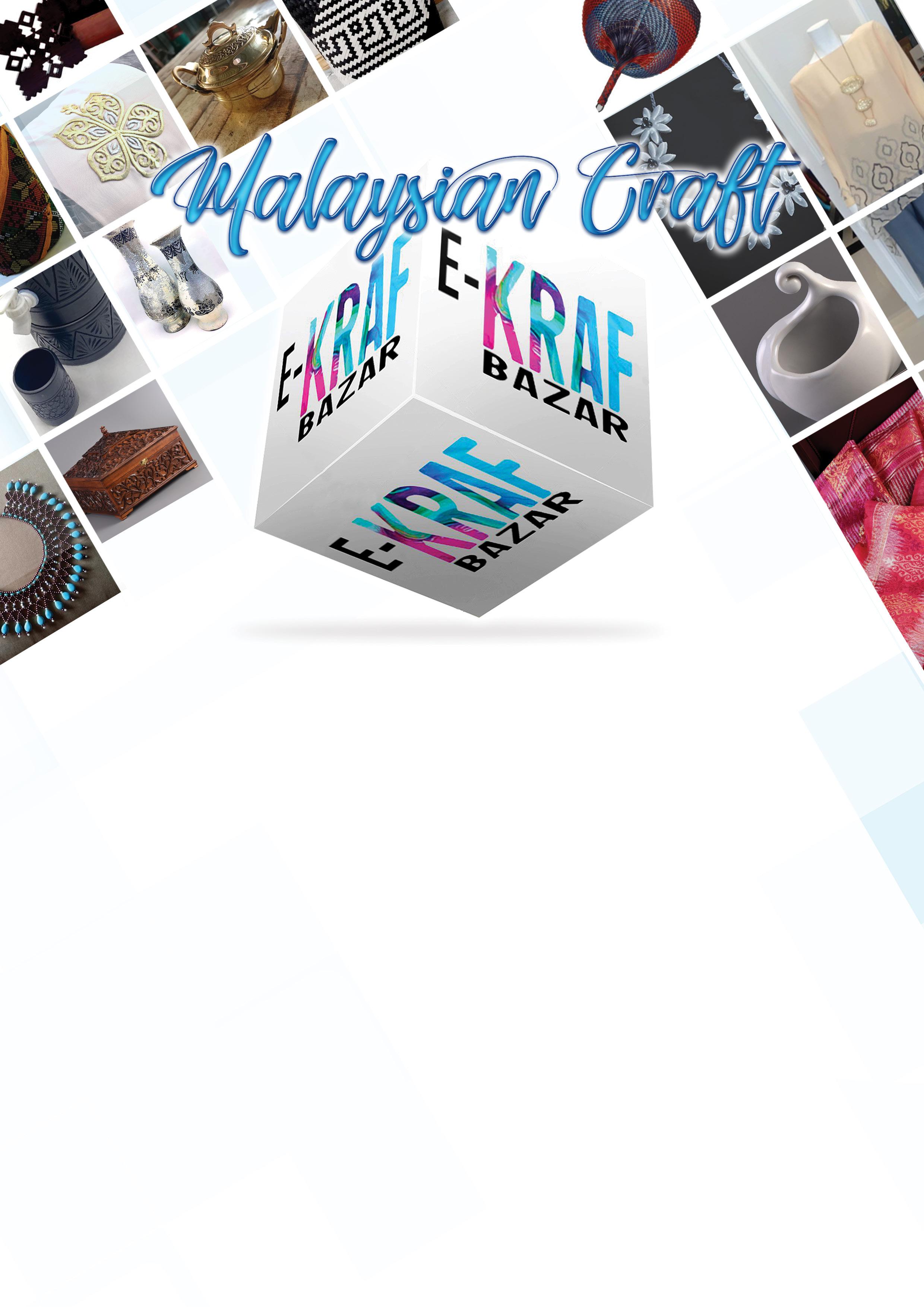
10 minute read
Kita Ke Kampung’ 3.0: Celebrating Handicraft
A pressed flower artwork displayed at Puan Esiah’s atelier. Puan Esiah claimed that she can read a person’s character from his or her selection of colours and design when creating a pressed flower artwork.
‘Kita Ke Kampung’ 3.0: Celebrating Handicraft Heroes
Text by SHAHIDA SAKERI Images by MUHAMMAD HASIF MOHD JELANI
Quick question, when was the last time you bought any product directly from a local artisan?
In a world where almost everything is mass produced and churned out by machines and automation, traditional handicrafts are slowly losing ground. Ignore them longer, this precious fabric of our cultural identity might be gone for good. Do we want this to happen? Fortunately, there is still light at the end of this tunnel.
Case in point, the recent lockdown in Malaysia sees the rise of armchair shopping among Malaysians, which eventually led to the #SupportLocal movement that encourages people to shop from local brands. This is a fantastic effort to support the local economy. If we continue to buy a wide range of products locally, many local artisans may actually get the chance to be successful.
Hence, with this notion in mind, ‘Kita Ke Kampung’ programme returns for the third time, highlighting the local heroes who think and work with their hands, especially the small business crafters in Selangor who tried to endure the knock-on effects from the COVID-19 pandemic. The programme is a joint effort between Selangor’s Rural and Traditional Villages Development, Malay Customs, Culture and Heritage Committee; Selangor State Economic Planning Unit (UPEN); Selangor State Cultural Council (MKNS); and Gaya Travel Magazine.
Read on to discover some of the best traditional handicraft heroes that you can find in Selangor to show your support. Get ready to add items in your shopping cart!
Tanjak (W: binmansor.com / Instagram page: @tanjak_official)
Tanjak – also known as destar – is a headgear synonymous to the Malay identity. But do you know that unlike tengkolok, tanjak should only be worn by males? Many national historians believe that in the olden days, you could tell a lot about someone’s identity, social status, origin, or even character just by looking at his tanjak. But today, the rules are slightly lenient in the way how men can wear this form of headgear. Men, for example, can don any design of any colour whenever and wherever they like. However, after saying so, one should avoid donning the headgear in yellow or ivory during official ceremonies when royal families are in attendance. Each Malay Sultan in Malaysia has his own unique tanjak design, with ‘Balung Raja’ being the signature style for the Sultan of Selangor.
There are now plenty of establishments where one can buy beautiful tanjak; once such place is Bin Mansor Legacy Enterprise, located in Kajang, Selangor. Established in 2017, the company specialises in designing traditional attires according to the Malay custom. The company is helmed by Mohd Herin Bin Mansor and Mohamad Hatta Bin Mansor who are both passionate in preserving this Malay sartorial artform. They offer various tanjak designs from as low as MYR80 each and up to thousands of Ringgit depending on the material used and the intricacy of the design requested by the customer.
Pressed Flower Craft (Facebook page: Laman Kraf Tani)
Originated from China and Japan, the art of pressed flowers has long been used to preserve the beauty of natural blooms. Petals or leaves are often dried and pressed before carefully arranged and glued onto a material according to one’s creativity to create a beautiful botanical collage. Traditionally, the flowers or leaves are left to dry under the sun. But do you know that nowadays, you can conveniently use the microwave to speed up the drying process? The sizes of this collage vary, from as small as a bookmark to as huge as a feature wall art.
All images below: Mr. Mohd Herin from Bin Mansor boutique demonstrating how the ‘Balung Raja’ tengkolok is folded.

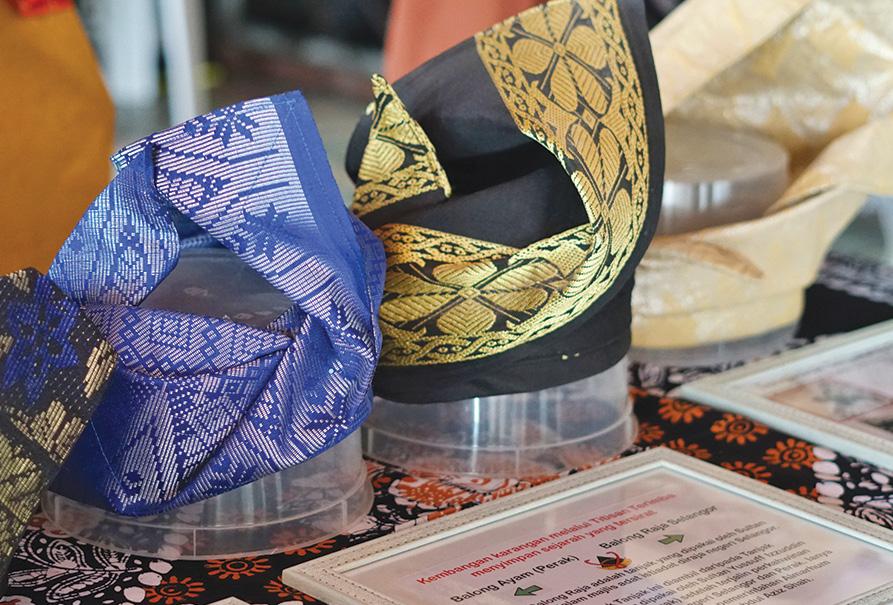


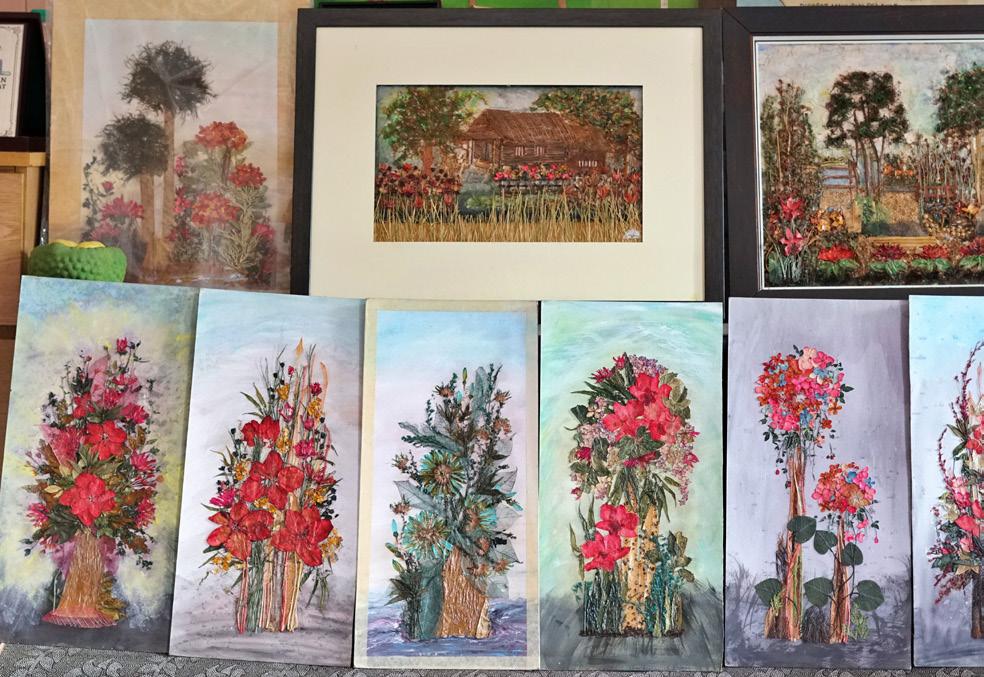
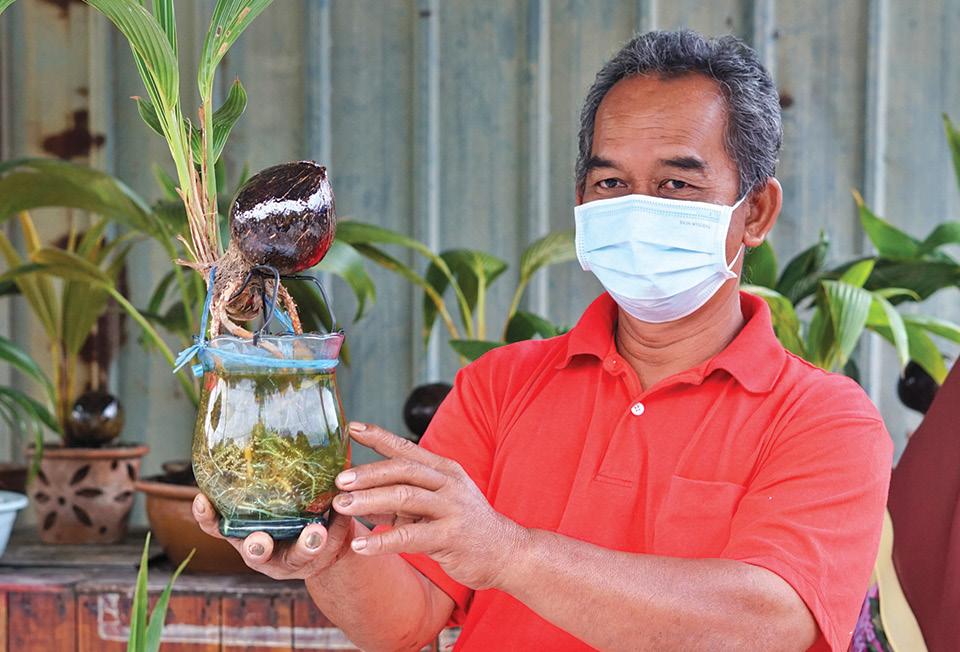
Clockwise from Left: One of the beautiful pressed flower crafts made by Puan Esiah in greater detail; Customers are spoilt for choice when trying to choose their favourite pressed flower craft; Mr. Mustafa showing one of his coconut bonsai plants, which typically has a lifespan of three years.
Puan Esiah binti Kaimun from Banting, Kuala Langat, is no stranger to the pressed flower craft. In fact, she is a multiple award-wining pressed-flower artisan whose stunning artworks have touched the hearts of fans from Malaysia and abroad. Interestingly, she also has another unique gift, which is to read a person’s personality just by studying the pressed-flower design made by the person during her sharing sessions held before the COVID-19 pandemic. Though she no longer conducts pressed-flower classes, public can still purchase her crafts by contacting her directly at +6 019 253 4620 or her Facebook page. The prices of her works start from as low as MYR5 per piece, depending on the size and the design requested by the customers.
Coconut Bonsai
Bonsai is an ancient art form that has been developed for centuries in Japan. Bonsai growers usually prefer to use cedar, Japanese maple, juniper, or pine due to their aesthetics. But today, do you know that there’s a tropical version of this ornamental plant that secures a firm spot in many households in Southeast Asia? It is the coconut bonsai, which involves a mature germinating coconut being planted in a pot and then its new fronds pruned from time to time to slow down its growth.
The entire process of completing one bonsai can be laborious and takes around seven to 10 months. Fortunately, those who do not have the patience needed in making a coconut bonsai can purchase it directly from Mr. Mustafa (+6 019 303 5004), whose workshop is in Sijangkang, Selangor. The prices for this type of bonsai range from MYR70 to MYR250 each. To grow this form of bonsai, he uses a mixture of black and red soil, including coconut husk, to ensure that sufficient moisture can be retained while allowing water to drain immediately from the pot. For special requests, Mr. Mustafa also makes coconut bonsai immersed in water inhabited by a beautiful Siamese fighting fish, known as betta, swimming around happily.
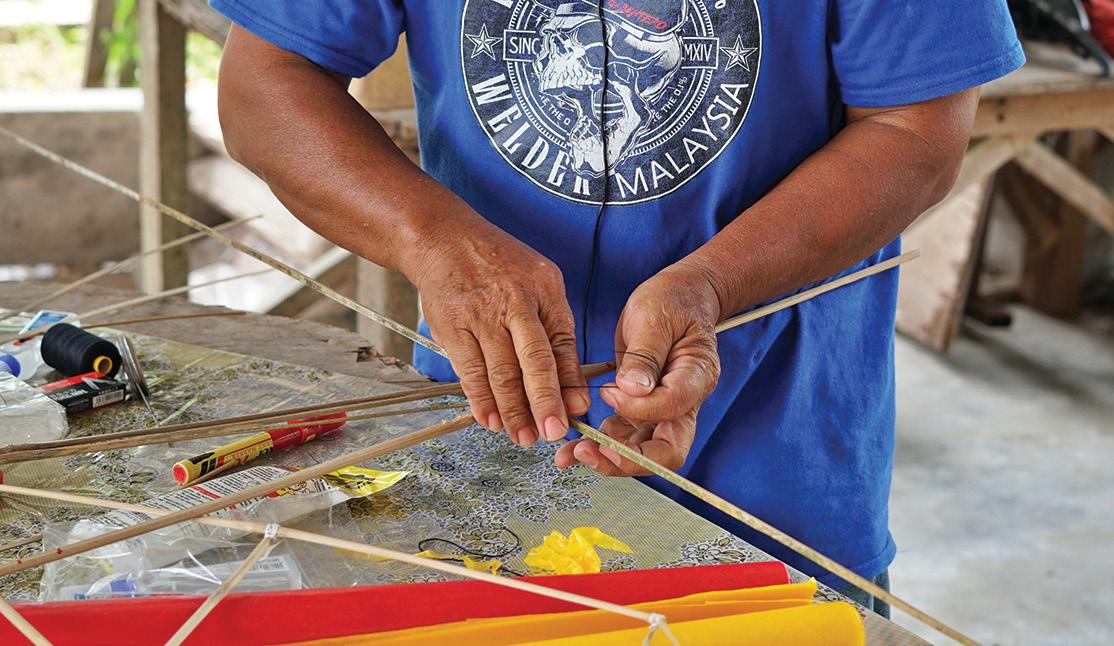
Above: The process of making wau kapal begins by making the frame first. Below: Wak Muskhan showing an almost complete wau kapal.
Wau Kapal
Have you ever seen or flown Wau Kapal? Considered as Selangor’s official traditional kite, Wau Kapal has been played since 1940s. In the past, Wau Kapal was used as a beacon to guide fishermen at sea to the direction of the land. It gets its name from the design of its trailing edge that resembles a ship. The kite traditionally boasts a Spanish cherry flower motif on its wing. However, the modern version is simpler and decorated with patterns according to the maker’s whims.
Those who are interested in buying Wau Kapal can do so from Wak Muskhan (+6 011 1557 6926) who currently resides in Kampung Sungai Buaya, Kuala Langat, Selangor. He has been making this traditional kite for over 40 years. He even knows how to make strong Wau Kapal suitable for kite competitions. He starts by making the frame using bamboo sticks, before pasting kite papers over this frame. These papers need to be folded beforehand to strengthen them and allow them to expand in hot weather. The type of bamboo used for making this kite is bambusa vulgaris due to its flexibility. Once completed, he then checks the kite’s lateral balance by adding mass at or near its head to ensure that the kite rises vertically when being flown. Wau Kapal by Wak Muskhan are sold for at least MYR30 each, and can go up to hundreds of Ringgit Malaysia, depending on requested size and motifs.
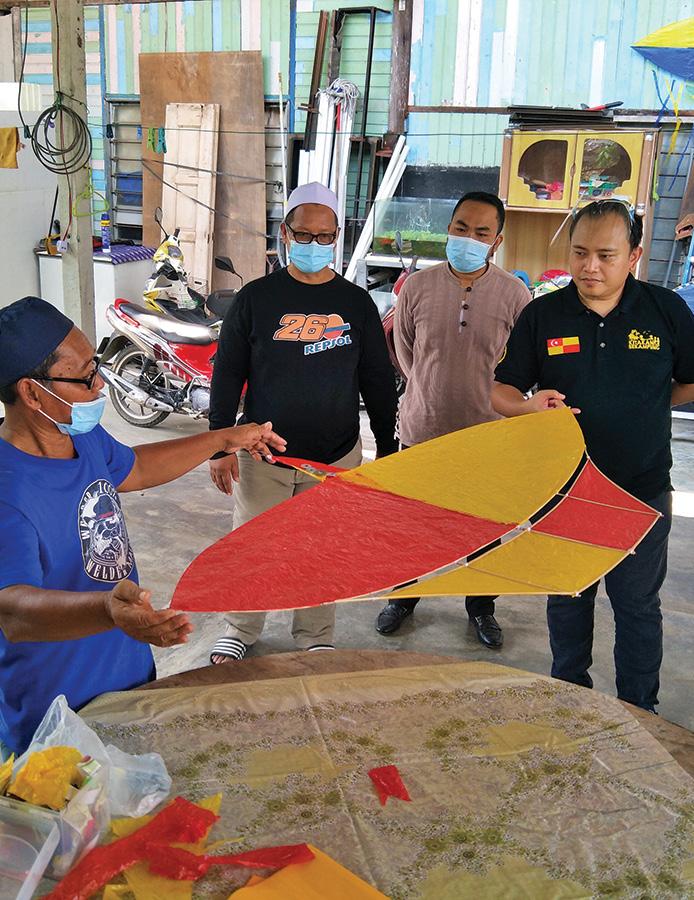

Selangor Batik
Batik in Malaysia has always been synonymous with the ones found in Peninsular Malaysia East Coast, but do you know that the state of Selangor has its own unique motif? According to Mr. Hamdan from Nadi Cantek, batik makers in Selangor tend to employ modern batik pattern by creating abstract designs through the combination of geometric and floral motifs, then accentuated using brighter palettes. He adds that such pattern is popular among the younger crowd, and suitable for daily wear.
Mr. Hamdan develops his passion towards batik since high school. He then pursued his interest by working at Samasa Batik, one of the oldest batik factories in Malaysia, before launching his own boutique. Interestingly, he does not limit the art of batik painting to sarongs only. After years and years of experimenting with batik dyes, he is now a proud maker of no-wax batik wall artworks that incorporate beautiful colours of batik dyes. Those who are interested in purchasing batik products from Mr Hamdan can visit his workshop in Felda Gedangsa, Kuala Kubu Bharu, or contact him directly at +6 016 293 5476.
Clockwise from Above: Selangor State Executive Councillor for Malay Culture and Heritage, Rural Development and Traditional Village Mr. Borhan Aman Shah trying his hands on batik-colouring; Close up on one of the beautiful batik artworks made by Mr. Hamdan; The artist himself painting batik.
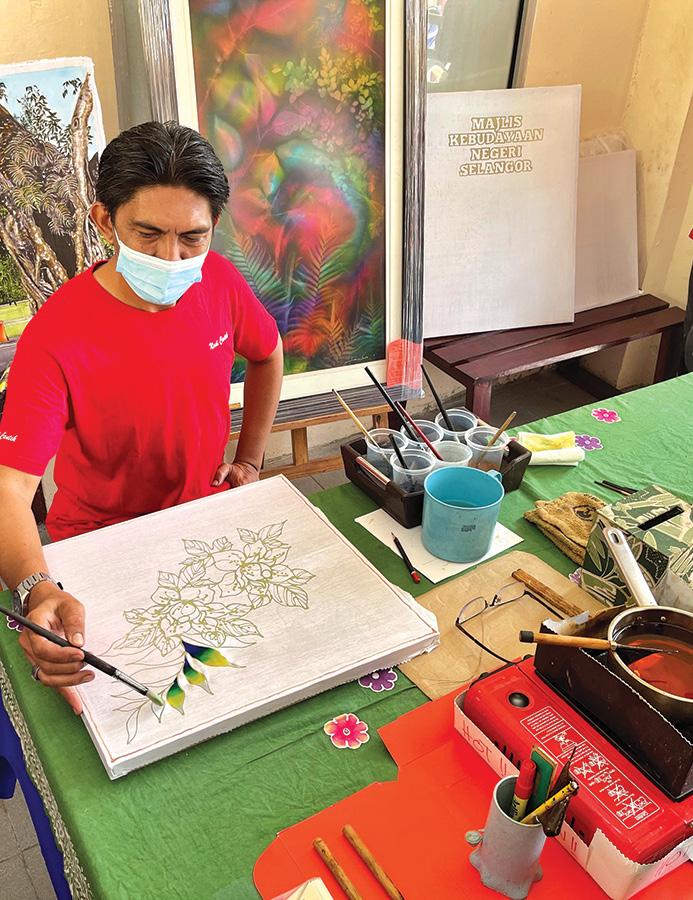

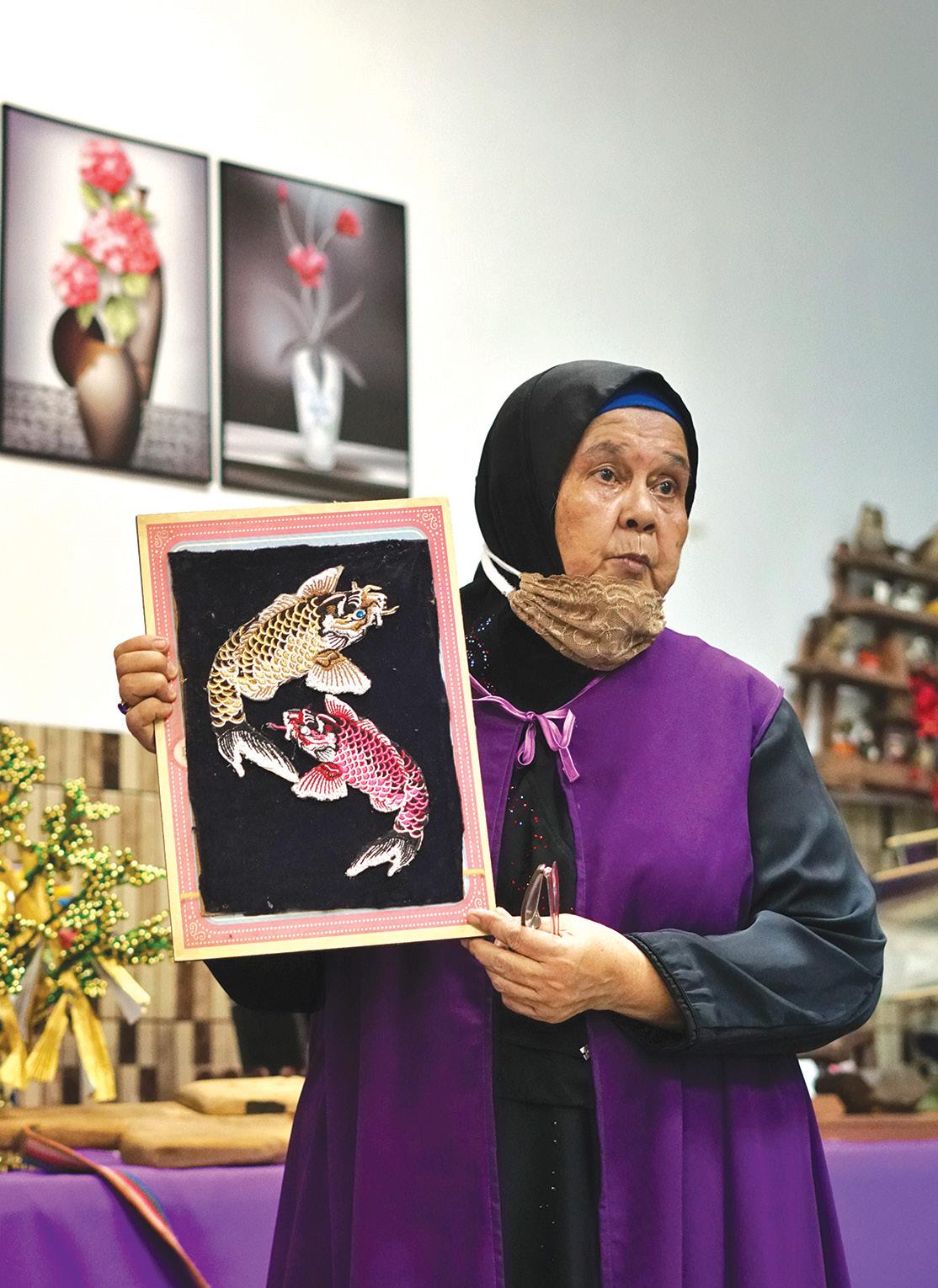
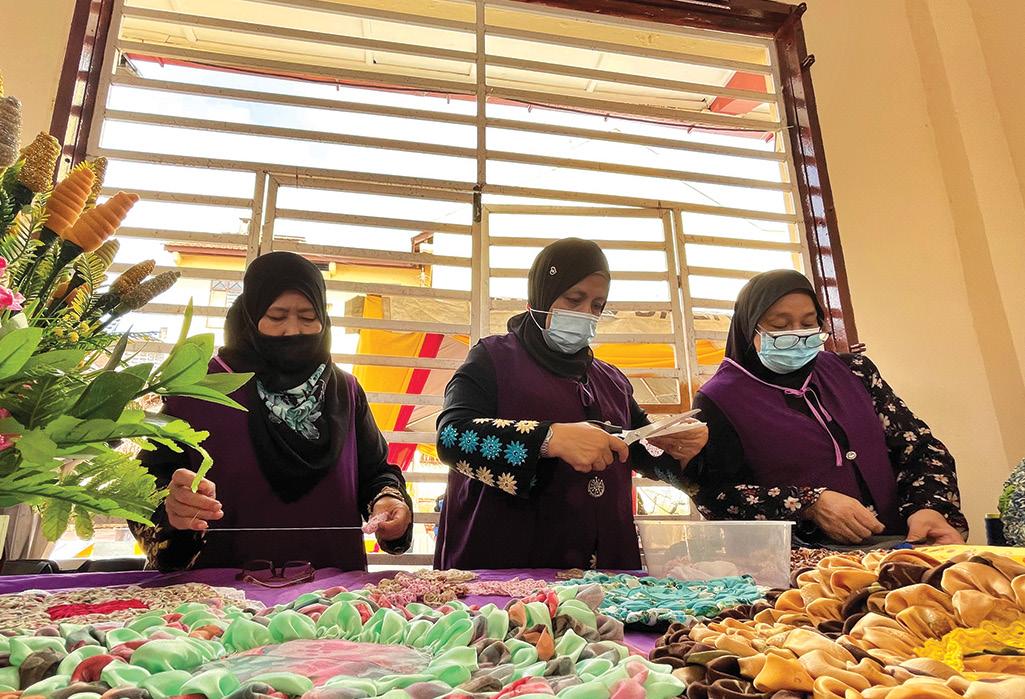
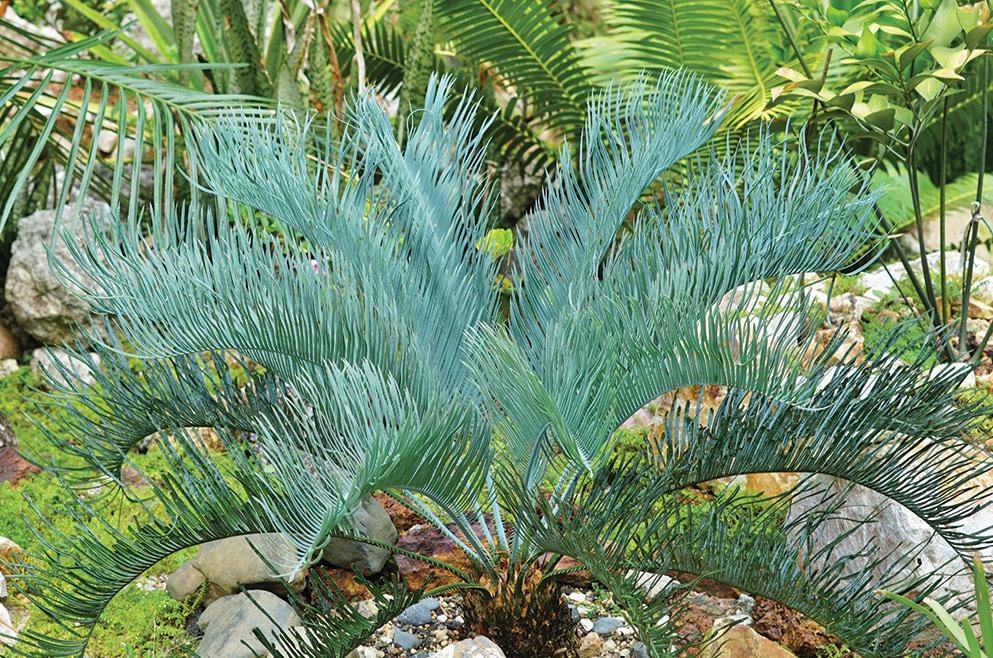
Clockwise from Left: Mak creates artworks ranging from wall decorations to decorative flowers; Persatuan Kebajikan Amal Insan Budi currently has 20 members who each receives commission from the products they sold; One of the cycads grown in Mr. Jaafar’s garden.
Recycle Craft
Established since 2011, Persatuan Kebajikan Amal Insan Budi has been encouraging women to upskill via craftmaking. The founder, Madam Rohani, also affectionately known as ‘Mak’ by many, specialises in upcycling byproducts or waste materials into beautiful decorative pieces. Come to her workshop on Wednesdays as she organises small-scale, hands-on classes for those who want to channel their creativity through artmaking. Her classes are free, but willing contributions of any size are welcome. Mak often uses her own materials to make her products, but she’s open to work on the materials given by customers too should they have special requests. Interested parties can contact her at +6 014 236 2281.
Cycads
Though not exactly a handicraft, growing a cycad requires skill and patience, thus become an art form in its own right. Do you know that cycad is dubbed as ‘the living fossil’? It is an ancient plant species that can be traced as far back as the Triassic period. The plant has evolved in many ways since then. Today, it is usually found on the steep hard-to-reach hillsides, between 100- and 500-metre altitude, where the soil is dryer. This, in turn, makes the plant expensive. In fact, a mature cycad can reach up to tens of thousands of Malaysian Ringgit! It is no surprise then why a cycad is often considered a highly prized addition to one’s garden.
Mr. Jaafar from Kampung Sijangkang, Telok Panglima Garang, is one of the many horticulturists who have developed interest in cycads. He has been growing the species for the past 10 years and now sells them at competitive prices. Interested buyers need to contact him in advance at +6 011 1111 6000 as stocks are limited. Cycads require minimal care yet takes more than 10 years to mature. The plant is also dioecious, which means that male and female cones are born on separate plants, and hence making this species even harder to reproduce if the owner does not own both male and female cones.
Gaya Travel Magazine team members express our heartfelt gratitude to Selangor’s Rural and Traditional Villages Development, Malay Customs, Culture and Heritage Committee; Selangor State State Economic Planning Unit (UPEN); and Selangor State Cultural Council (MKNS) for making ‘Kita Ke Kampung’ programme a success.


